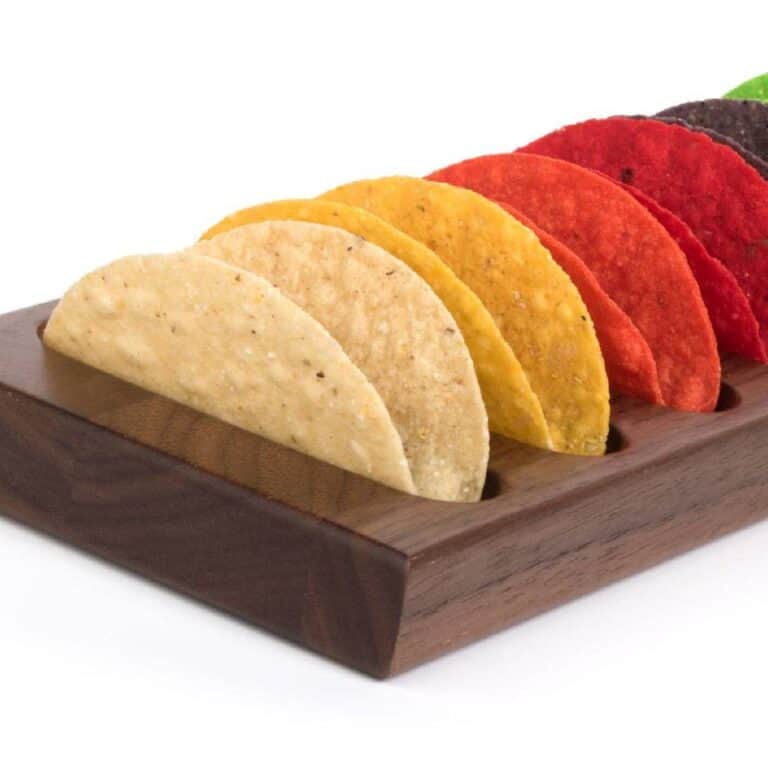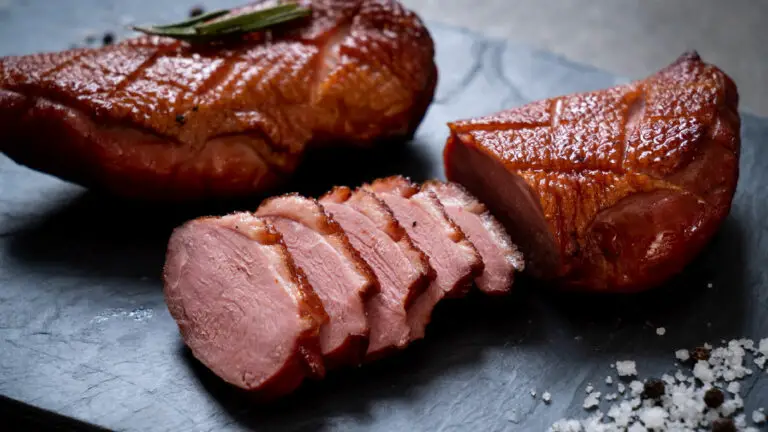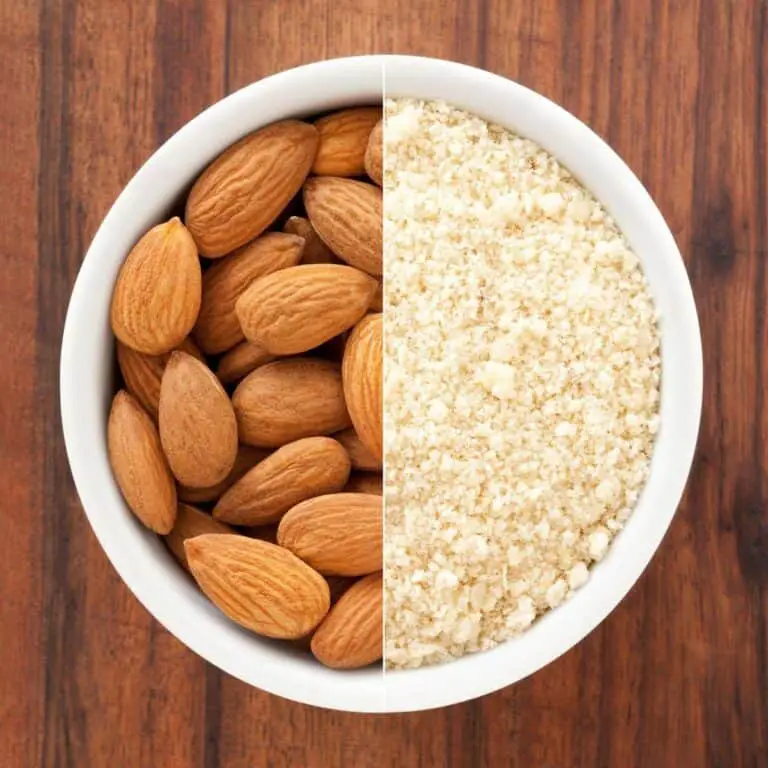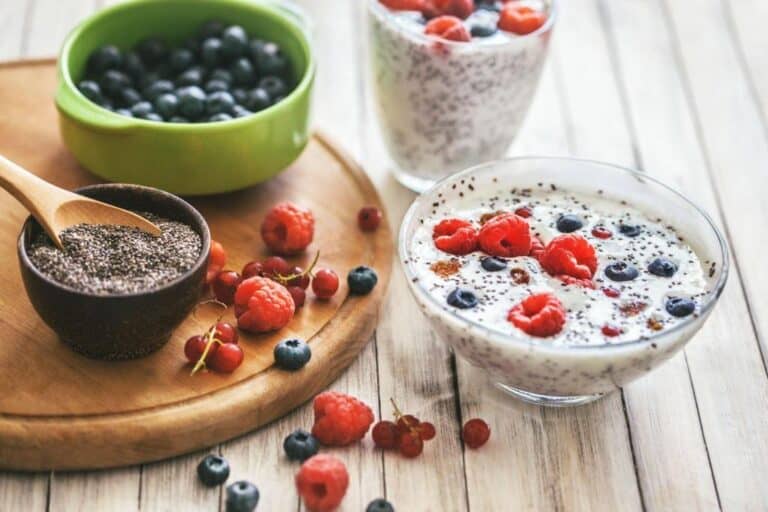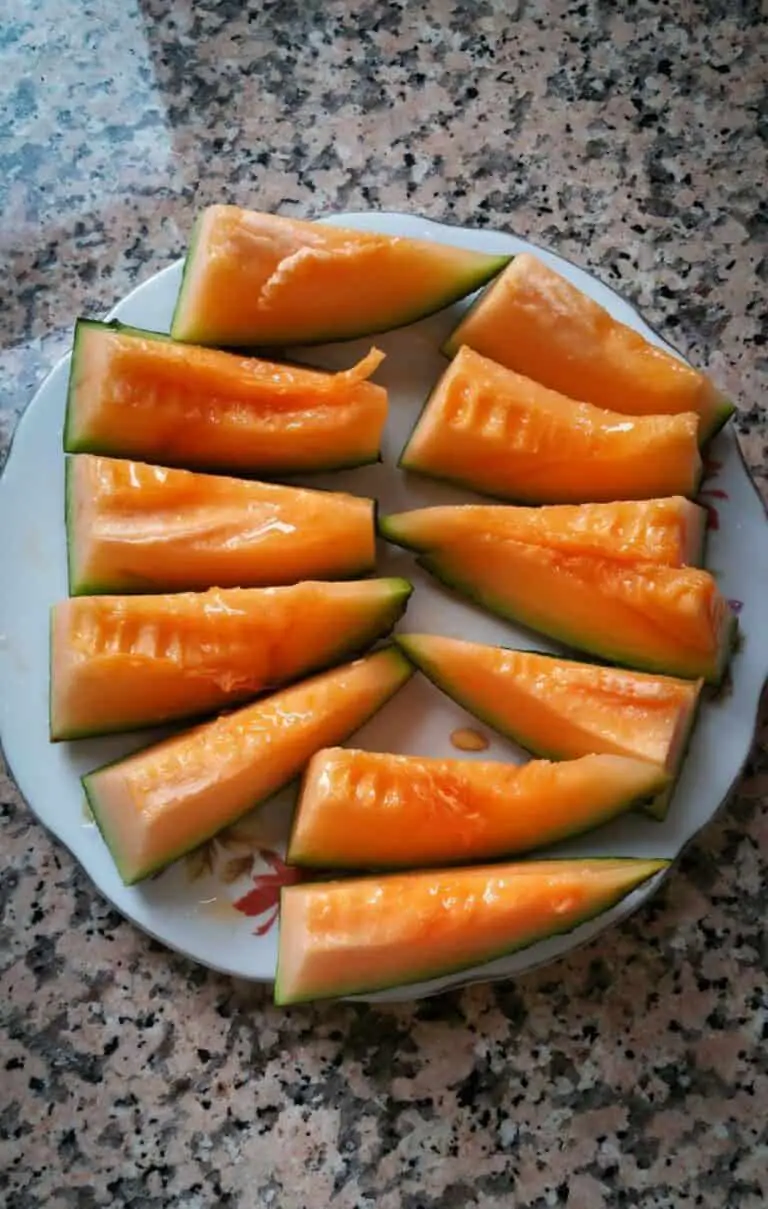Chia Seeds: Exploring the Different Types of Fiber
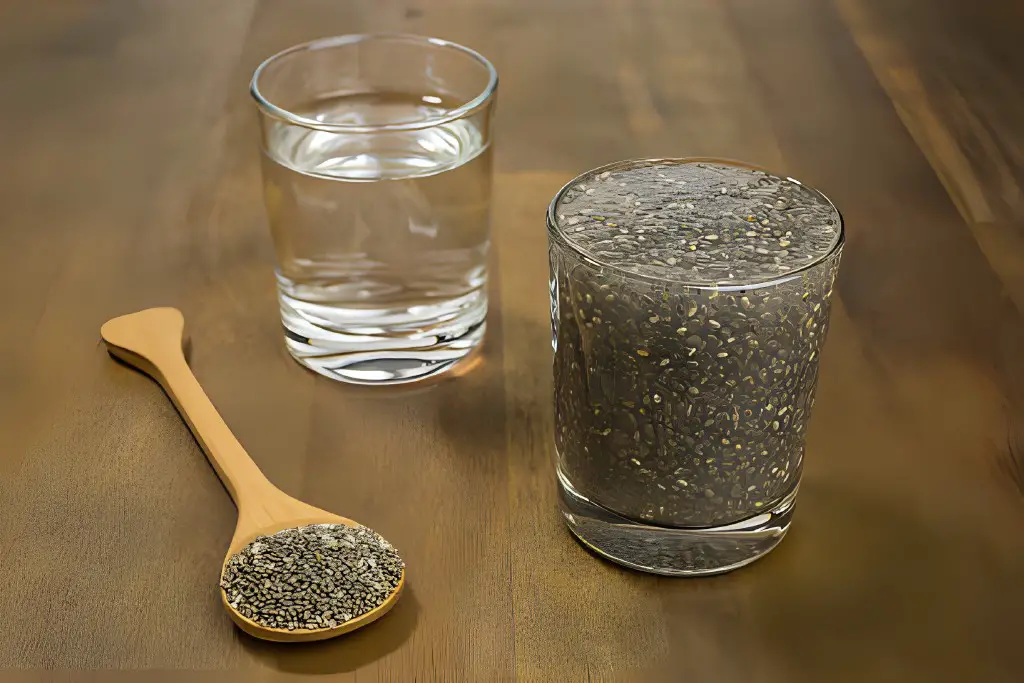
Allow me to take you on a journey as we explore the fascinating world of chia seeds and healthy fibers. In the bustling landscape of nutrition, chia seeds stand out as tiny powerhouses packing more than meets the eye.
As I navigate through the intricate tapestry of health, we’ll focus our lens on the unsung heroes within these seeds—soluble and insoluble fibers. Picture this: a microscopic universe where these fibers play pivotal roles in supporting our well-being.
Chia seeds, often celebrated for their omega-3 fatty acids, antioxidants, and versatile culinary applications, reveal another layer of their nutritional prowess—fibers.
Join me in decoding the secrets behind chia seeds’ soluble and insoluble fibers, understanding their unique contributions to digestive health, and uncovering the subtle elegance of mucilage content. It’s time to reimagine chia seeds not just as a kitchen staple but as a nuanced ally in our quest for wholesome nutrition.
The Rise of Chia Seeds

In recent years, there has been an undeniable buzz surrounding chia seeds. These tiny powerhouses have gained a reputation as a superfood, and for good reason!
Packed with essential nutrients, they offer numerous health benefits that make them the darlings of nutritionists and health enthusiasts alike. But what sets chia seeds apart from other superfoods? One word: fiber.
Fiber is often overlooked in our diets, but it plays a crucial role in maintaining our overall well-being. And when it comes to fiber content, chia seeds are truly unrivaled.
They contain an impressive amount of dietary fiber—one ounce provides approximately 11 grams! But what makes this attribute so exceptional is not just the quantity; it’s the quality of the fiber found in these tiny seeds.
As we delve into the incredible world of chia seed fibers, you will discover two distinct types: soluble and insoluble fiber. Each type brings its own set of unique health benefits to the table. From promoting healthy digestion to aiding weight management efforts and reducing cholesterol levels, these fibers work wonders inside your body.
Understanding Fiber: Soluble vs. Insoluble
When it comes to dietary fiber, not all types are created equal. Chia seeds contain both soluble and insoluble fiber, each with its own unique health benefits. Let’s delve into what sets these two types of fiber apart.
Soluble fiber is known for its ability to absorb water and form a gel-like substance in the digestive system. This type of fiber is particularly beneficial for those looking to manage their cholesterol levels or regulate their blood sugar levels.
It slows down digestion, allowing nutrients to be absorbed more slowly, which helps to prevent sudden spikes in blood sugar levels after meals. Studies have also shown that consuming foods rich in soluble fiber can help lower LDL (bad) cholesterol by reducing its absorption in the intestines.
On the other hand, insoluble fiber adds bulk to stools and promotes regular bowel movements. It acts like a sponge, soaking up water as it moves through the digestive tract and aiding in waste removal. Insoluble fiber plays a vital role in preventing constipation by adding volume and softness to stool while stimulating regularity.
Additionally, this type of fiber supports overall gut health by providing an environment conducive to beneficial bacteria growth.
By understanding the differences between soluble and insoluble fibers found in chia seeds, you can make informed choices about how they fit into your diet plan. Whether managing cholesterol or promoting better bowel function is your goal, or if you simply want enhanced overall well-being, harnessing the power of both types of fibers will go a long way towards achieving optimal digestive health.
Let’s now explore creative ways to incorporate chia seeds into your diet for maximum fiber intake!
Soluble Fiber: Balancing Blood Sugar and Cholesterol
One of the main types of fiber found in chia seeds is soluble fiber. Soluble fiber dissolves in water, forming a gel-like substance in the digestive tract. This unique property makes it particularly beneficial for maintaining healthy blood sugar levels. When consumed, soluble fiber slows down digestion and helps regulate the release of glucose into the bloodstream, preventing sharp spikes and dips in blood sugar levels.
Chia seeds are an excellent source of soluble fiber, with just one ounce containing approximately 10 grams. Including chia seeds regularly in your diet can provide a steady source of this important nutrient that may help manage diabetes or insulin resistance. In fact, a study published in the British Journal of Nutrition found that consumption of chia seeds significantly reduced fasting blood glucose levels and improved glycemic control in individuals with type 2 diabetes.
In addition to its role in managing blood sugar levels, consuming soluble fiber from sources like chia seeds can effectively improve cholesterol profiles by reducing LDL (bad) cholesterol levels. According to a review in The American Journal of Clinical Nutrition, increasing dietary intake of soluble fibers causes modest but significant decreases in total cholesterol and LDL cholesterol concentrations.
While chia seeds are a fantastic option for boosting your daily intake of soluble fiber, there are other plant-based foods you can incorporate into your meals as well. Foods like oats, barley, legumes (such as beans and lentils), fruits (like apples and oranges), vegetables (like broccoli), flaxseeds, and psyllium husk powder all contain notable amounts of soluble fibers, which allow you to diversify your diet while reaping similar health benefits.
Insoluble Fiber: Promoting Regular Bowel Movements
While soluble fiber may steal the spotlight when it comes to digestive health, insoluble fiber plays an equally important role in maintaining a well-functioning digestive system. Insoluble fiber refers to the indigestible part of plant foods that adds bulk to your diet and helps keep you regular.
It passes through your gastrointestinal tract relatively intact, aiding in the efficient movement of food waste through your intestines.
Consuming adequate amounts of insoluble fiber is crucial for promoting gut health and preventing constipation. Chia seeds are an excellent source of this essential nutrient, as they contain about 10 grams of total dietary fiber per ounce, with most being insoluble.
By incorporating chia seeds into your daily routine, you can enhance bowel regularity and support overall gut function.
In addition to chia seeds, there are other foods that are rich in insoluble fiber, which can be easily incorporated into your diet. Whole grains like oats and brown rice, fruits such as apples and berries (with their skin), vegetables like broccoli and carrots, nuts and seeds like almonds or flaxseeds—these all provide a good dose of insoluble fiber.
Including a variety of these foods alongside chia seeds will ensure you get enough insoluble fiber for optimal gut health.
| See also: Tips for Chia Seeds Shelf Life After Opening |
Chia Seeds: The Ultimate Fiber Powerhouse
When it comes to dietary fiber, chia seeds truly reign supreme. These tiny black seeds are packed with both soluble and insoluble fibers, making them a nutritional powerhouse for promoting overall health. Soluble fiber is known for its ability to absorb water and create a gel-like substance in the digestive system, which helps slow down digestion. Chia seeds contain an impressive amount of soluble fiber, providing a gentle bulkiness that can aid in maintaining healthy bowel movements.
In addition to their soluble fiber content, chia seeds also contain significant amounts of insoluble fiber. This type of fiber adds bulk to stools and helps prevent constipation by moving waste through the digestive system more efficiently.
By incorporating chia seeds into your diet regularly, you provide your body with a balanced combination of both types of fibers – benefiting not only your digestion but also other aspects of health.
By consuming both soluble and insoluble fibers found abundantly in chia seeds, you can enjoy their combined benefits for optimal digestive function. Whether it’s adding chia seeds to smoothies or yogurt for an added nutritious boost or incorporating them into baked goods like muffins or energy bars – there are countless creative ways to incorporate these tiny powerhouses into your meals for improved digestion!
So go ahead and experiment with recipes that include chia seeds- not only will they add texture, but their remarkable fiber content will work wonders on your digestive system too!
Incorporating Chia Seeds into Your Diet
Now that you understand the incredible power of chia seeds and their various health benefits, let’s explore some creative ways to incorporate them into your daily diet. With their mild, nutty flavor and versatile texture, chia seeds can easily be added to a wide range of dishes for an extra dose of fiber and nutrients.
Incorporating chia seeds into everyday meals or recipes is incredibly easy and convenient. Try adding a tablespoon or two to your morning smoothie or yogurt for an extra dose of fiber-packed goodness. You can also mix them into pancake batter or sprinkle them over salads for added crunch and nutrition.
Get creative by using them as an egg substitute in baking recipes; simply mix one tablespoon of chia seeds with three tablespoons of water until it forms a gel-like texture—perfect for vegan-friendly baked goods! With endless possibilities, you can easily enjoy the incredible power of chia seed fibers while creating delicious meals at the same time.
One simple way to start incorporating chia seeds into your diet is by sprinkling them over your morning bowl of yogurt or granola. Not only will this add a delightful crunch, but it will also provide a significant boost in dietary fiber. You can also mix chia seeds with milk or plant-based alternatives and let them soak overnight for a delicious and nutritious chia seed pudding.
Another popular option is using chia seeds as an egg substitute in baking recipes. To replace one egg, simply combine 1 tablespoon of chia seeds with 3 tablespoons of water and let the mixture sit for about 15 minutes until it forms a gel-like consistency. This substitution works well in muffins, pancakes, breads, and other baked goods.
If you’re looking to enhance the nutritional profile of your smoothies or shakes, adding a tablespoon or two of chia seeds can do wonders. They not only thicken the texture but also provide additional fiber content to keep you feeling full and satisfied throughout the day.
With these creative ideas in mind, there are endless possibilities when it comes to incorporating chia seeds into your diet. Don’t be afraid to experiment with different recipes and find what works best for you. By embracing these tiny superfoods on a regular basis, you’ll not only improve your digestive health but also enjoy their numerous other benefits for overall well-being!
Conclusion: Harnessing the Power of Chia Seeds for Optimal Health
Chia seeds are truly a nutritional powerhouse, offering a wide array of health benefits, including being an excellent source of dietary fiber. The two types of fiber found in chia seeds—soluble and insoluble—work together to promote optimal digestive health and contribute to overall well-being.
Soluble fiber forms a gel-like substance when mixed with water, which slows down digestion and helps regulate blood sugar levels. This type of fiber also aids in reducing LDL cholesterol levels, promoting heart health. On the other hand, insoluble fiber adds bulk to the stool, helping prevent constipation and keeping your digestive system running smoothly.
Incorporating chia seeds into your daily diet can be simple yet transformative. You can sprinkle chia seeds on top of yogurt or oatmeal for added crunchiness and nutrition. They can also be used as an egg substitute in baking recipes or ground up into flour for gluten-free options. Additionally, mixing chia seeds with water creates a thick gel that can be used as an egg replacement or added to smoothies for extra thickness.
By regularly including these tiny but powerful seeds in your meals, you not only get more of the nutrients your body needs, like omega-3 fatty acids, but you also give your body the fuel it needs to keep your gut healthy and your overall health in good shape. So why not start adding some versatility and nutrition to each meal by harnessing the incredible power that lies within chia seeds? Your body will thank you!


